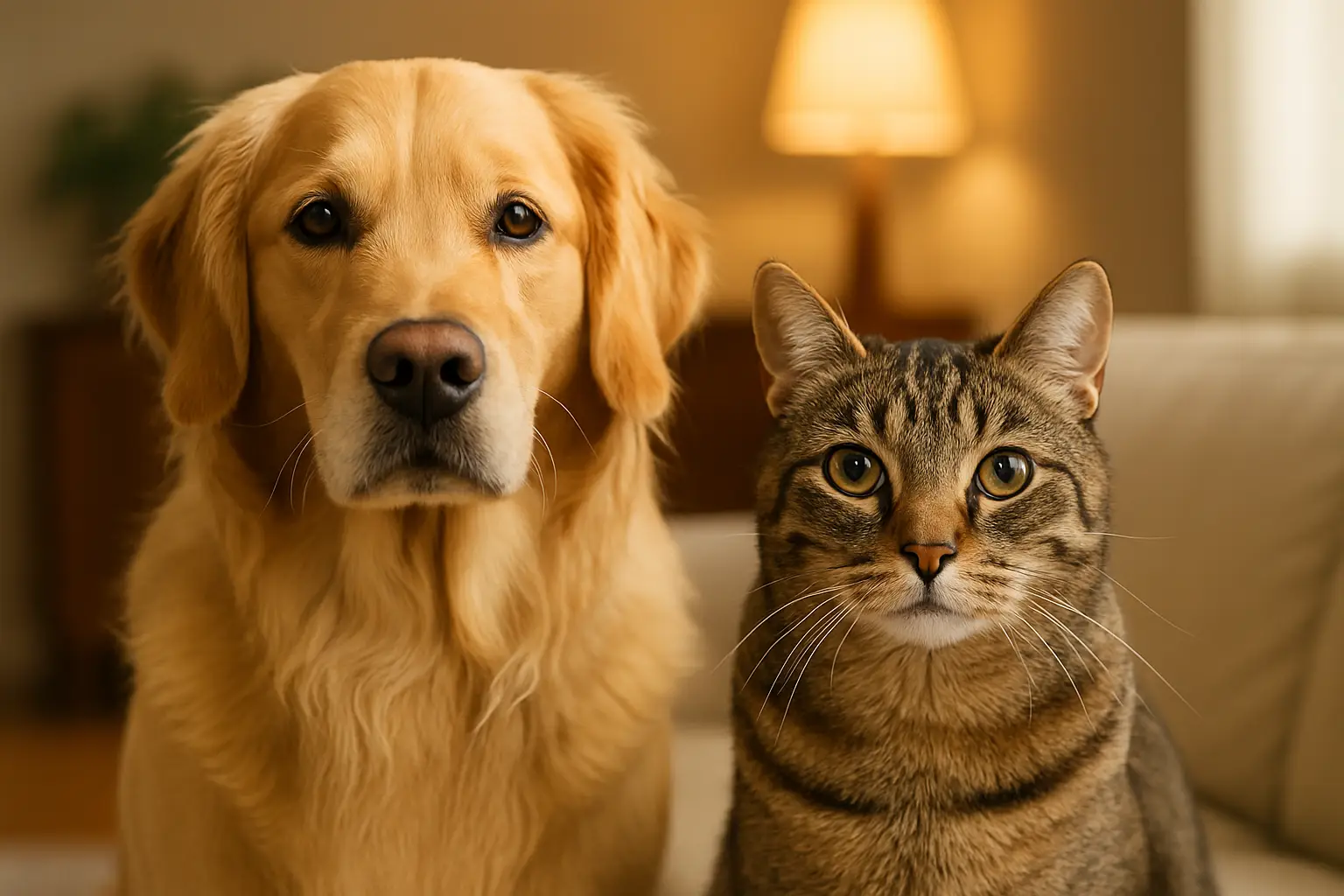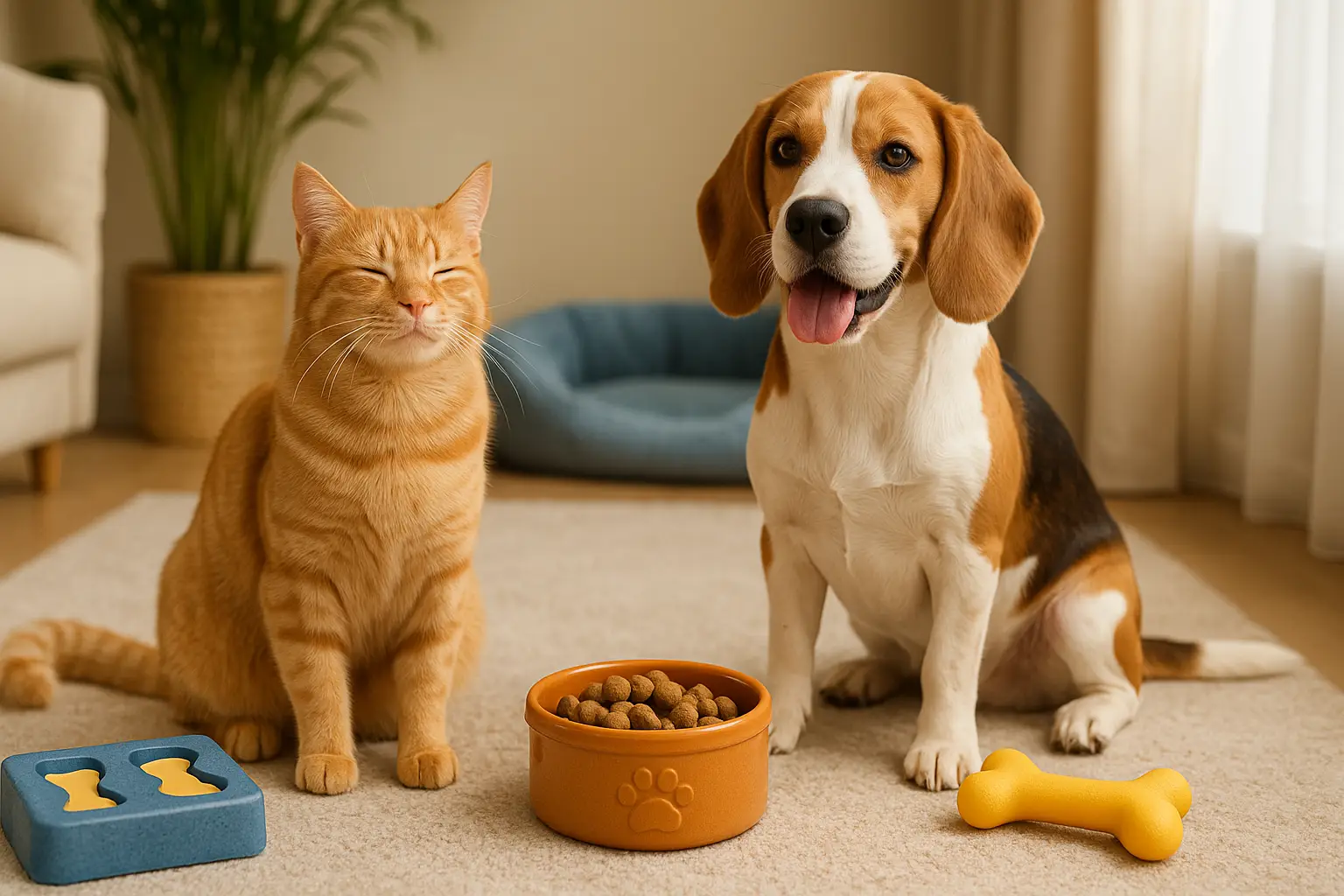How to Read Your Pet’s Body Language and Emotions 🐾🧠
Pets speak volumes—just not with words.
Every twitch of a tail, blink of an eye, or change in posture carries meaning. For pet owners who truly want to understand and bond with their animal companions, learning how to read pet body language is essential. It opens up a new world of communication, trust, and emotional clarity.
This guide dives deep into decoding both dog and cat body language, helping you interpret signs of happiness, fear, discomfort, playfulness, and even pain—so you can become your pet’s most attentive and understanding companion.

Why Body Language Matters More Than Words 🧬
Animals communicate primarily through posture, movement, expression, and sound. Understanding their nonverbal cues helps you:
- Recognize stress before it escalates
- Avoid bites or scratches from fear responses
- Understand when they’re in pain or sick
- Strengthen emotional connection
- Reduce misunderstandings and misbehavior
- Build deeper trust and respect
🧠 WordPress Suggestion: Include a downloadable “Pet Emotion Decoder” chart with images and cue lists.
General Principles of Animal Body Language 📘
Though each pet has a unique personality, some basic rules apply across the board:
- Context matters – the same signal can mean different things in different settings.
- Clusters of signals are more meaningful than one single gesture.
- Look at the whole body – not just ears or tail.
- Watch transitions – shifts in posture or tension often reveal emotional states.
Reading Dog Body Language 🐶
Dogs are expressive, but often misread. Let’s break down key signals from nose to tail.
1. Ears 👂
| Position | Meaning |
|---|---|
| Forward and perked | Alert, curious, engaged |
| Relaxed to the side | Calm and content |
| Flat or pinned back | Fear, submission, anxiety |
| Twitching or shifting | Uncertainty or overstimulation |
2. Eyes 👁️
- Soft gaze with slow blinks: Trust and calm
- Dilated pupils: Excitement, stress, or fear
- Whale eye (white of eye showing): Uncertainty, discomfort
- Direct stare: Challenge or warning (contextual)
3. Mouth & Expression 😛
| Behavior | Interpretation |
|---|---|
| Open mouth, tongue out | Relaxed, playful |
| Lip licking or yawning | Discomfort, stress (in context) |
| Panting (without exertion) | Anxiety, heat, or fear |
| Tightly closed mouth | High alert, tension |
| Growling or lip curling | Defensive or warning behavior |
💡 Tip: A dog that yawns outside bedtime is often trying to calm itself or deescalate a tense moment.
Dog Tail Talk 🐕
Tail position and movement tell a lot—far more than “wagging = happy.”
| Tail Behavior | Emotion |
|---|---|
| High and stiff wag | Alert or potentially confrontational |
| Low, slow wag | Cautious or unsure |
| Fast, broad wag with loose body | Excited and friendly |
| Tucked tightly | Fear or submission |
| Still, straight out | Focused or threatened |
🎥 Add a “Tail Movement Video Examples” block embedded from YouTube for visual learners.
Play Signals in Dogs 🎉
Dogs invite interaction with a set of play behaviors that are often misunderstood:
- Play bow (front legs down, butt up): Let’s play!
- Exaggerated bouncing: Excitement
- Soft growling or mouthing: Friendly engagement (watch context)
- Zoomies: Release of energy and happiness
- Spinning or jumping circles: Overflow of emotion
🚫 Don’t confuse rough play with aggression. Play involves loose bodies, soft mouths, and reciprocity.
Stress and Fear Signals in Dogs ⚠️
These subtle signs indicate your dog is overwhelmed or scared:
- Ears pinned or rotated
- Whale eye
- Tail low or tucked
- Cowering or shrinking posture
- Trembling or panting
- Trying to escape, hide, or freeze
- Lip licking, excessive yawning
- Barking, growling, or snapping
🧘 WordPress Block: “Dog Stress Checklist” printable for tracking triggers and patterns.
Reading Cat Body Language 🐱
Cats are subtle communicators—but their messages are clear once you learn the code.
1. Ears 👂
| Ear Position | Meaning |
|---|---|
| Forward and alert | Curious, engaged |
| Slightly turned back | Thinking or processing |
| Flattened sideways | Fear, aggression, overstimulation |
| Twitching | Annoyance or heightened awareness |
2. Eyes 👀
- Slow blinking: Trust and affection
- Dilated pupils: Excitement, fear, or surprise
- Half-closed eyes: Comfort, calmness
- Fixed stare: Challenge or high focus
- Avoiding eye contact: Shyness or submission
👁️ Activity Block: “Try slow blinking with your cat” – build trust one blink at a time.
Cat Tail Signals 🐈
Tails are emotional barometers for cats.
| Tail Movement | Meaning |
|---|---|
| Upright with tip curl | Friendly, confident |
| Flicking side to side | Irritation or indecision |
| Puffed or bristled | Fright or aggression |
| Tucked beneath body | Fear or insecurity |
| Wrapped around you | Connection, affection |
💡 Cats flicking tails during petting may be saying, “I’ve had enough.”
Cat Comfort Signals 🛏️
These signs mean your cat is relaxed and happy in your presence:
- Purring (soft and rhythmic)
- Kneading paws on soft surface
- Lying on side or back (vulnerability)
- Exposing belly (trust—but not always an invite to touch!)
- Grooming themselves near you
🐾 Add a “Cat Happiness Checklist” for owners to monitor emotional wellbeing.
Mixed Signals: What to Do When Confused 🤷
Sometimes pets display conflicting cues—and it can be confusing.
Example:
- A wagging tail with a stiff body
- A purring cat that bites
- A dog showing excitement and stress at once
When in doubt:
- Assess the context
- Read the whole body
- Watch for transitions (shifting signals)
- Give space if unsure—better safe than sorry
🎯 Add a “What Is Your Pet Saying?” quiz block to engage readers interactively.
Communicating Back to Your Pet 🗣️
Your pet reads your body language too.
Ways to be more readable and trustworthy:
- Avoid sudden movements or loud tones
- Face them sideways instead of head-on (less threatening)
- Use calm voice and open hands
- Match their energy—don’t force play or affection
- Use consistent words and tones for commands or praise
💬 Speak less, show more—your presence is your message.
Final Thoughts: Speak Their Silent Language 🤝🐾
The beauty of reading your pet’s body language is discovering that you’ve been in conversation all along—you just didn’t always understand the words.
With awareness, patience, and practice, you’ll become fluent in the language of your pet’s eyes, tail, and posture. And in return, they’ll respond with deeper trust, greater ease, and a connection that feels almost telepathic.
Because when you listen with your eyes and heart, your pet feels heard—even without a single word spoken.




Post Comment